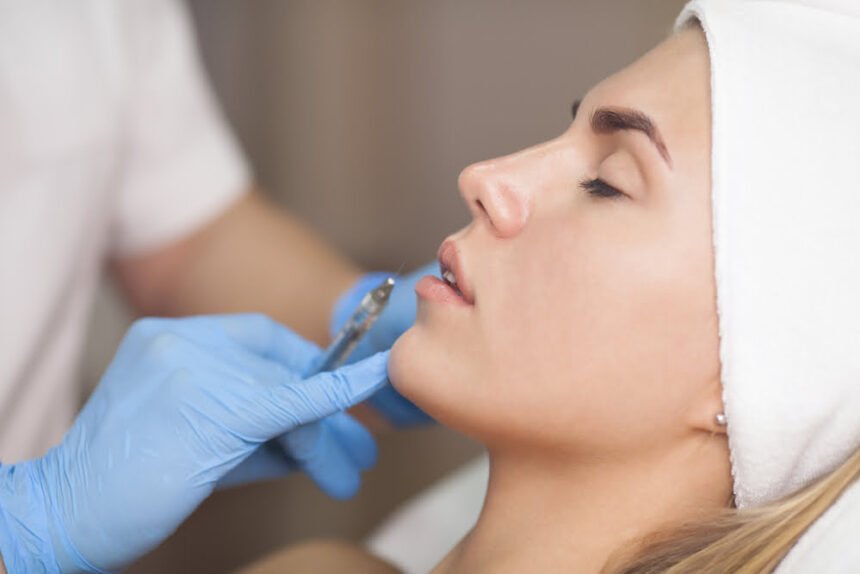Dermal fillers are among the most popular aesthetic procedures. They achieve a successful result by adding structure and volume to the critical areas of your face. You can use fillers to smooth out facial wrinkles, volumize lips, remove scars, reconstruct deformations, heighten contours, and reduce the shadow of your lower lids.
Most dermal fillers are done using hyaluronic acid enhancing injections to the skin tissues. Naturally, your body produces hyaluronic acid, which bonds with water to bring nourishment, hydration, and volume to your skin. However, with age, your body has less of it. Fortunately, you can use artificial hyaluronic acid for your dermal filler to enhance your natural features.
What Are Dermal Fillers?
Dermal fillers are gel-like substances injected into your skin by a professional. The procedure is minimally invasive and helps enhance your natural features. As you grow and your skin stretches, you lose facial volume.
Fillers are FDA-approved and safe for cosmetic use. Some of the popular fillers you should know are:
- Restylane
- Juvederm
- Belotero balance
- RHA
- Radiesse
With the use of any of them, you can see improvements in your facial depression, acne, scars, and your lip border.
During The Consultation
Dermal fillers are a form of a facelift and are perfect for facial rejuvenation. During the consultation stage, ensure you ask questions and speak up about your concerns and comments regarding your procedure. The following are some pointers on what you should discuss at the consultation:
- Your medical history
- The goals of your appearance
- The expected results
- Available options that are customized to your treatment specification
- Previous cosmetic procedures you’ve undergone
- Current medicine or substances you’re taking
- The potential risks of the procedure
Inquire about every aspect of the procedure and ensure you’re satisfied with the feedback. You’d want the best for your skin; hence, you should be as detailed as possible during the consultation.
Before The Procedure
Your doctor will check your skin tone and appearance before the procedure starts. You should prepare for your first dermal filler treatment by:
- Preparing your skin by using a moisturizer and avoiding things that may damage it, like over-exfoliating
- Using sunscreen to protect your skin from sun burns and damage. Also, don’t sit in the sun for long
- Stay hydrated, so your skin can recover quickly with no damage and swelling of the soft tissue.
Also, before your first dermal filler procedure, you should avoid the following:
- Don’t use any blood thinners for at least a week before the treatment to reduce bruising and quicken recovery
- Avoid alcohol 48 hours before the treatment
- Avoid prolonged sun exposure that could damage the skin.
The above will keep your skin in perfect shape and ready for dermal fillers.
Right before the procedure at the health center, expect the following:
- The doctor will mark strategic points on your skin as the filler injection points on your skin
- Some photographs may be taken of the soon-to-be-treated parts
- The injection sites are cleaned with an antibacterial agent
- A cold instrument or an aesthetic ointment can numb the area.
Typically, the procedure is painless, and the injections are manageable. However, if you’re in pain, inform your doctor so they can give you medication.
During The Procedure
A dermal filler procedure takes very little time. It can be between 20 and 60 minutes, depending on your needs, like the area and amount of filler used. However, if you’re combining it with another procedure, it may take longer.
Your doctor will apply a numbing cream to the sites and wait for it to take effect. You’ll probably feel tingling due to the cream, but that’s normal. Afterward, they inject the gel-like filler into the marked areas, massage it, and evaluate it.
The results of dermal fillers on soft tissue can be visible immediately. If the first injection doesn’t meet your aspiration or you aren’t happy with it, an addition can be made. Remember to keep your face as relaxed as possible during the procedure to avoid bruising and for better results.
After The Procedure
Once satisfied with the filler injections, your doctor will gently clean the markings. The area may appear a bit red and swollen. It will heal in under three hours, but you can use an ice pack to reduce discomfort or further swelling. The soreness may last a few days, and you don’t need medication.
To reduce the recovery time and help healing consider the following:
- Avoid rigorous exercise; only gentle walking
- Keep away from heat and sun exposure
- Don’t take alcohol at least 48 hours post-treatment
- Apply an ice pack or cold compress to reduce swelling, bruising, and redness
- Use sunscreen and moisturizer regularly
With these, your recovery will be pretty short. Remember, with dermal fillers, there’s no downtime; even with the healing process, you can continue with your everyday activities.
The dermal filler can last between 7 and 19 months, depending on the individual and the type of filler. After completion, you have an aftercare program your doctor will recommend.
Potential Side Effects
Like every other procedure, dermal fillers have risks. However, it’s uncommon to experience severe side effects. Some of the risks include the following:
- Rashes
- Skin necrosis
- Inflammation and swelling
- Redness
- Lack of symmetry
- Infection at the injection site
- Scarring
- Changes in skin color
- Mild pain
These are some of the side effects, and most are correctable. If you notice any, contact your doctor immediately.
Conclusion
Your body changes with age, and the difference includes wrinkles and many other signs. Dermal fillers are an excellent way to minimize such aging signs if you aren’t comfortable with them. Fillers plump up your skin and lips. Getting your first lifters may cause anxiety, but with the above details, you can prepare adequately.









